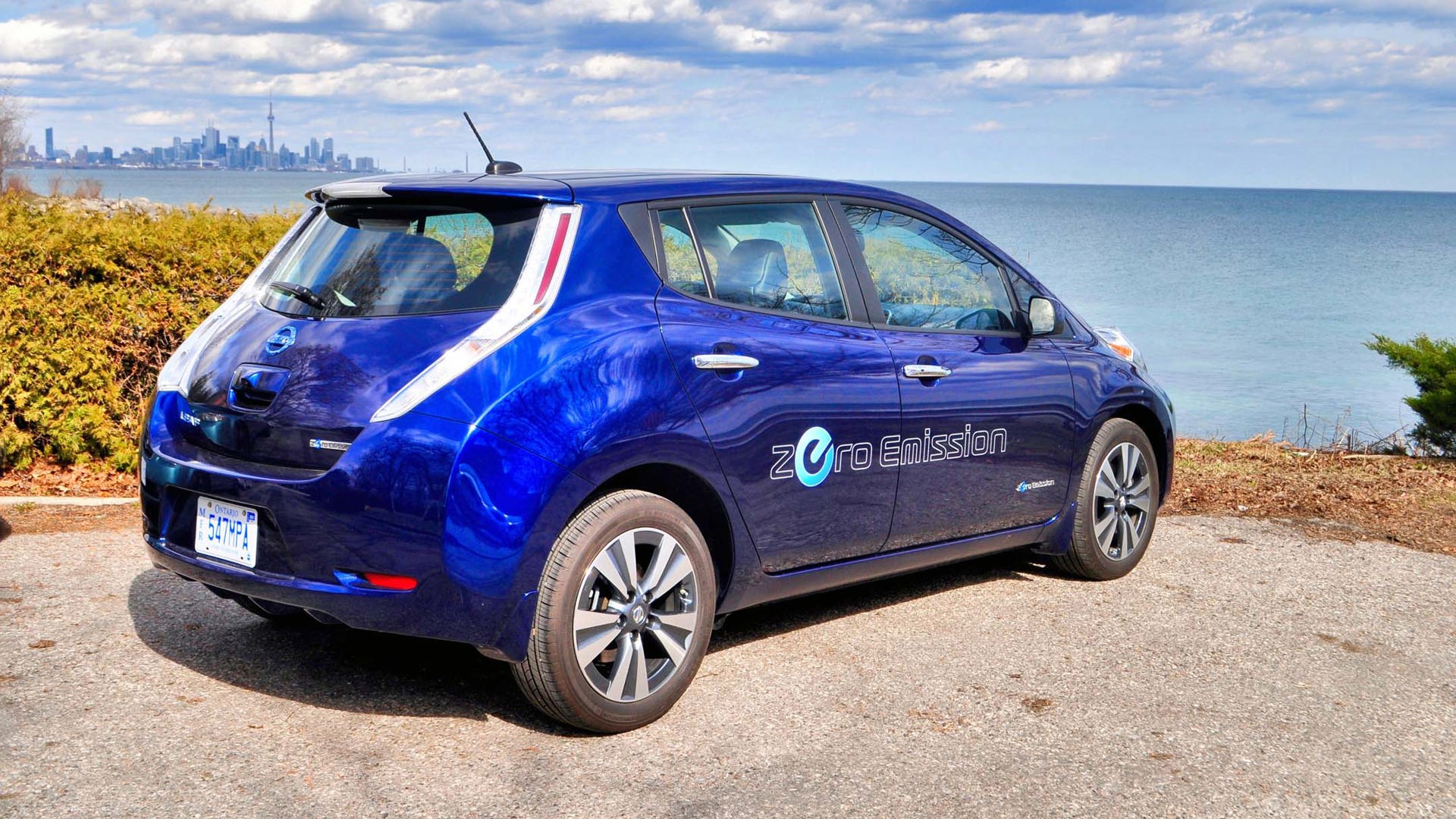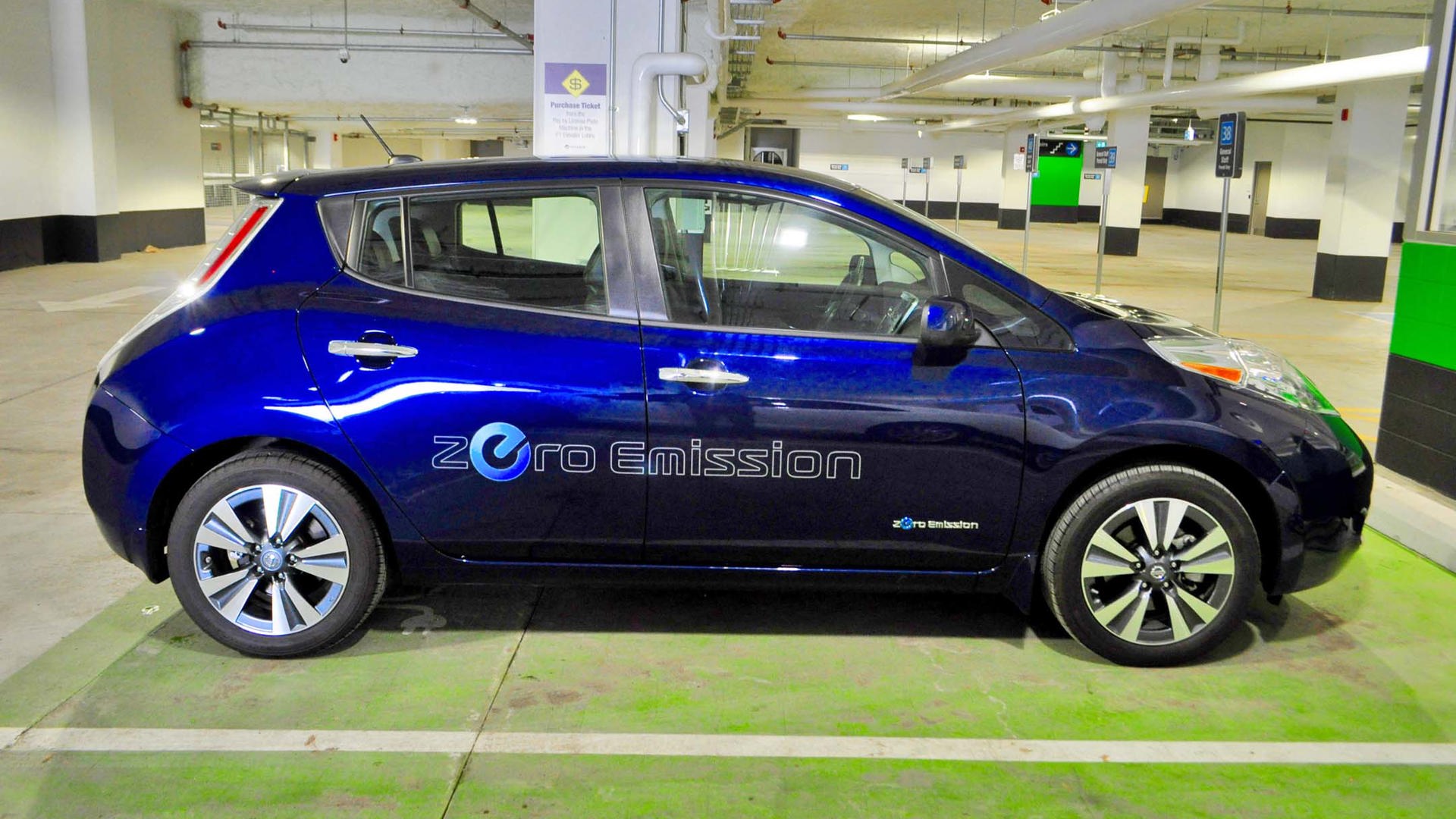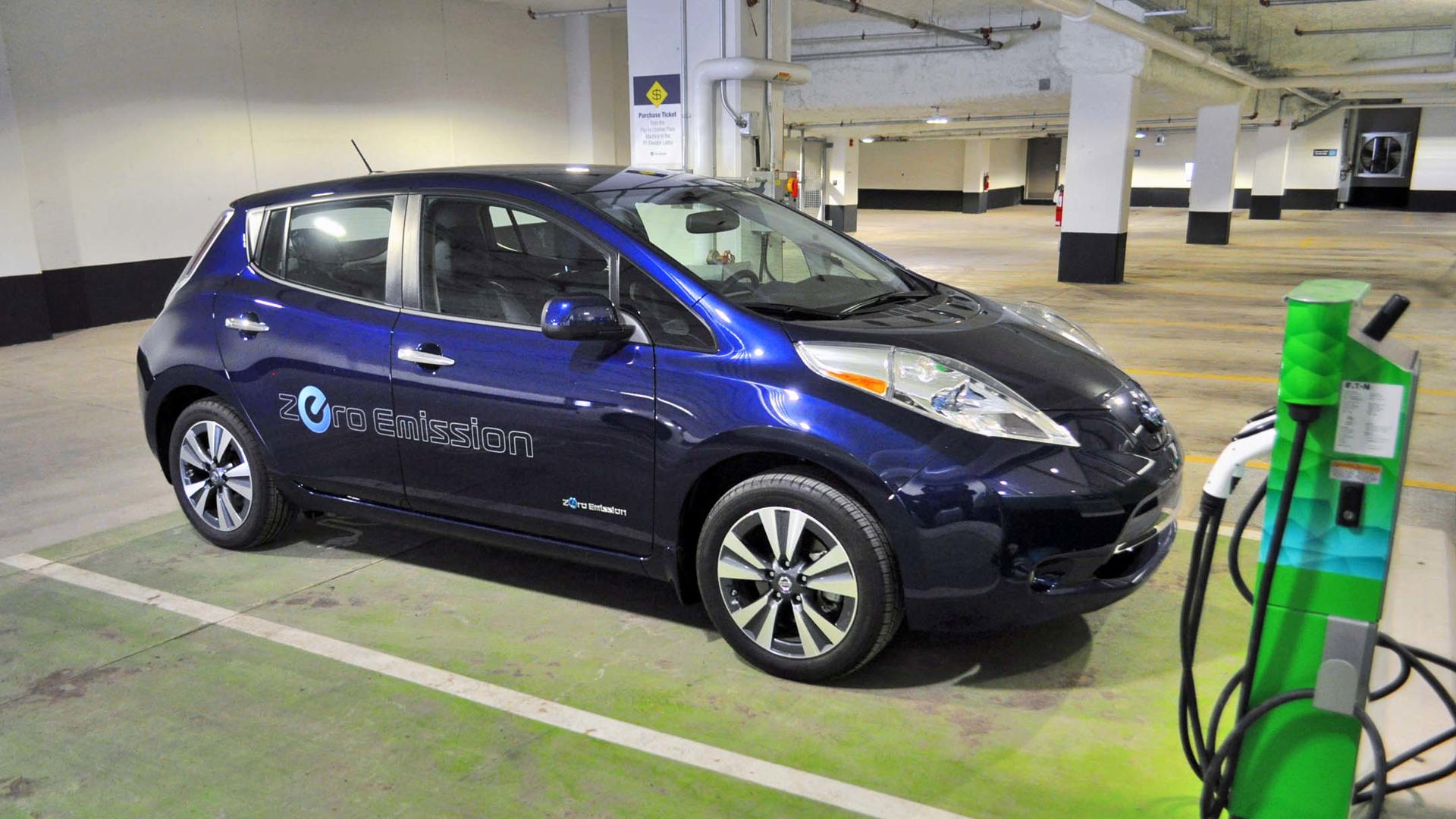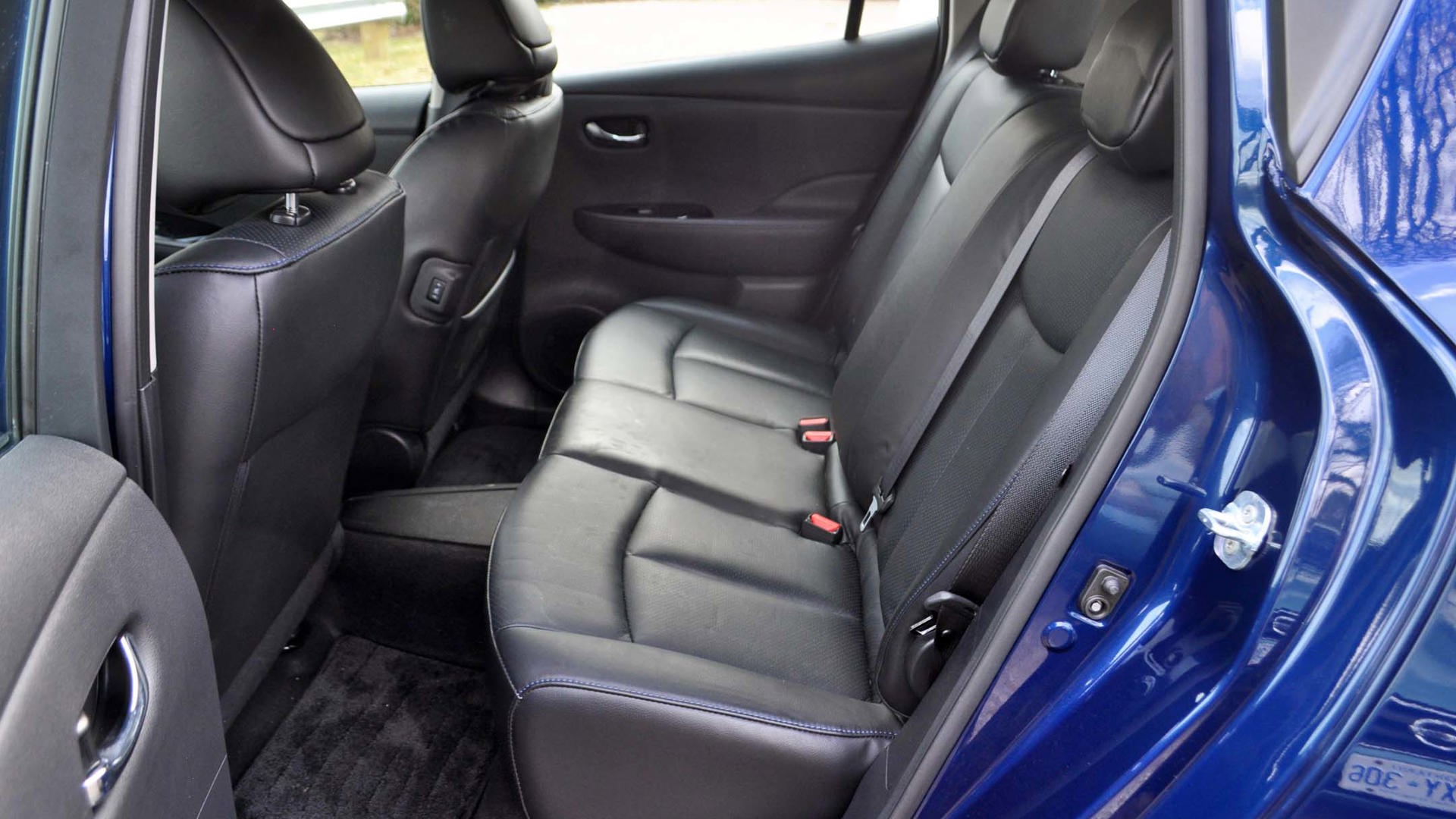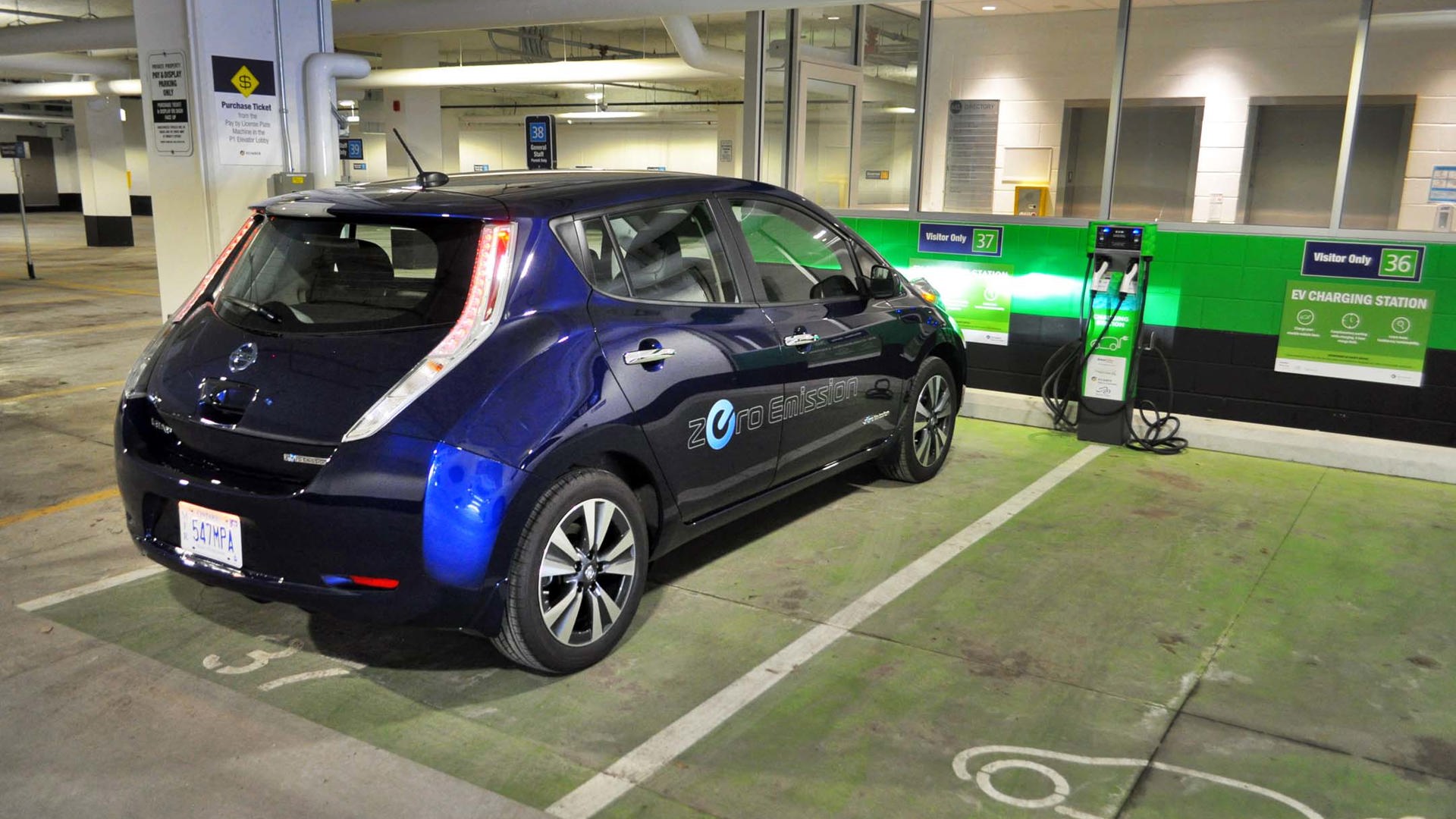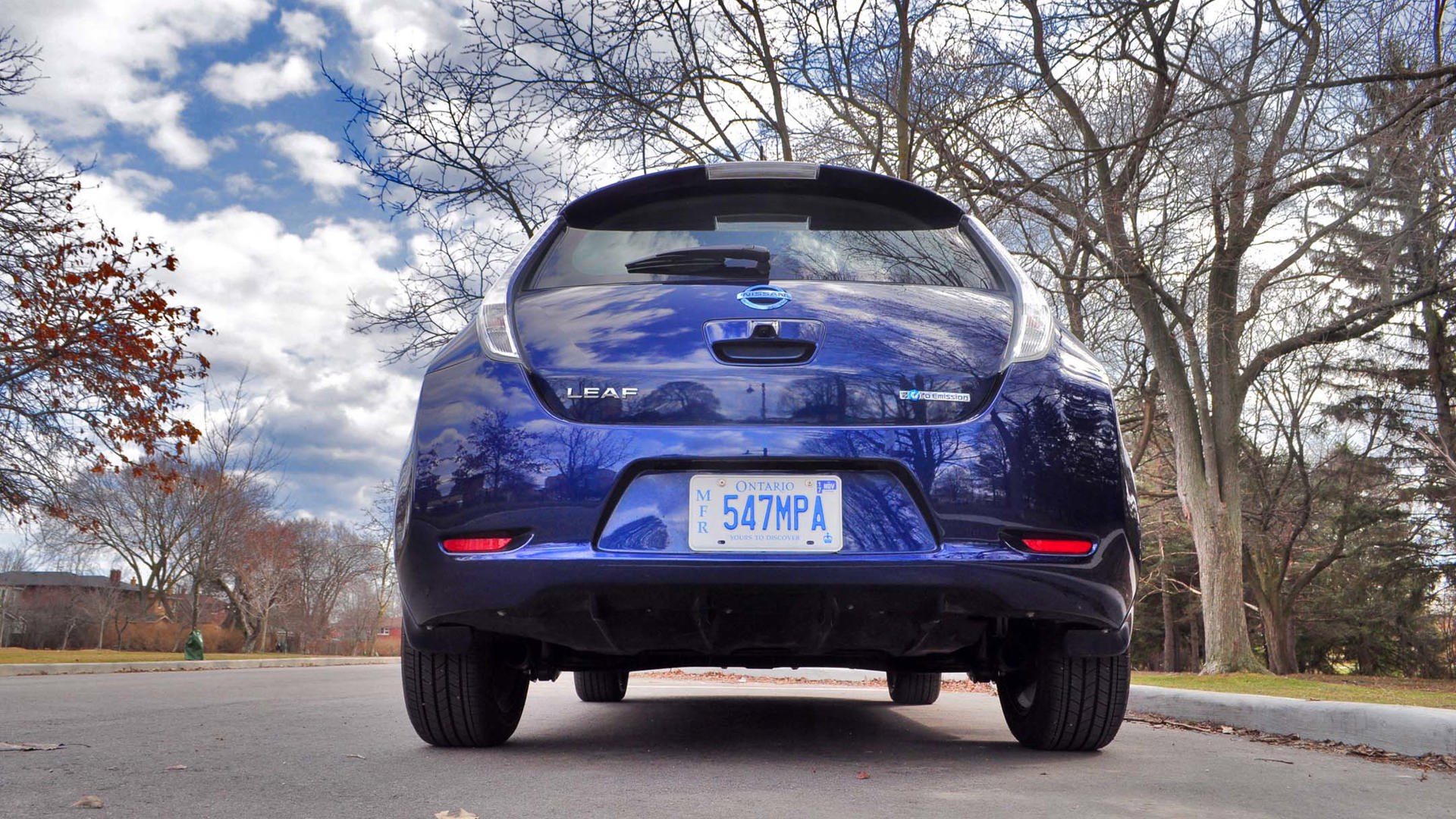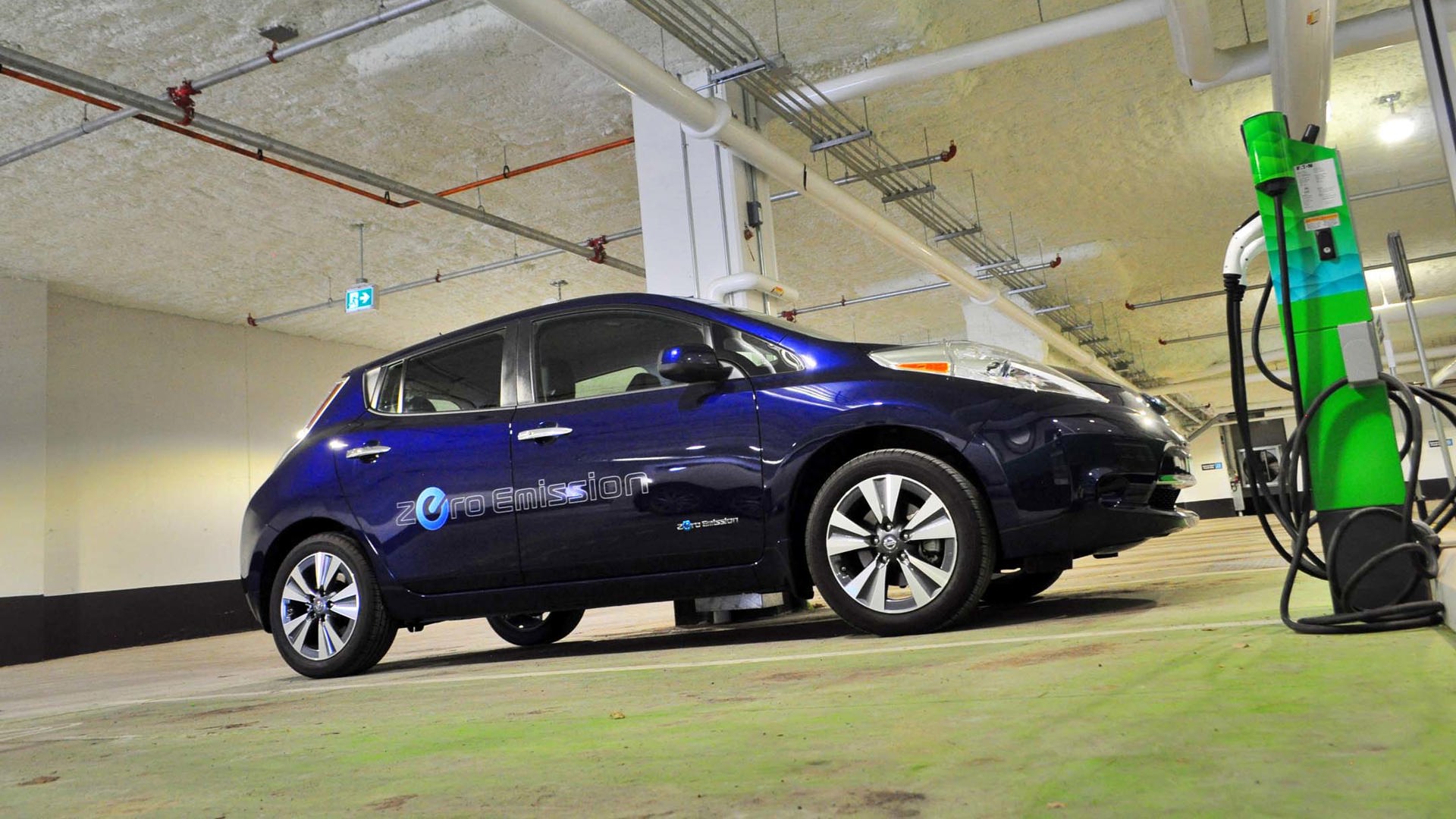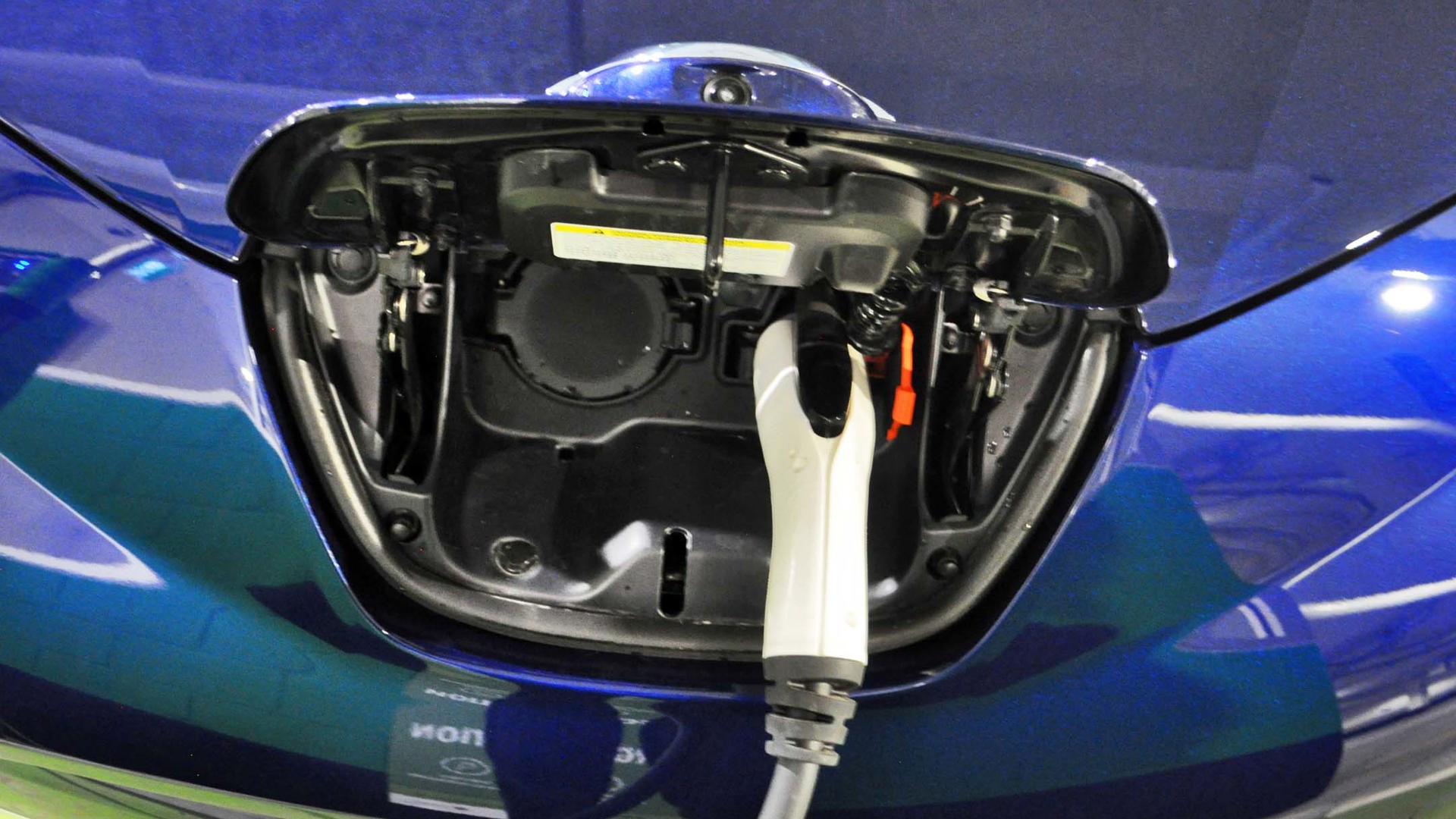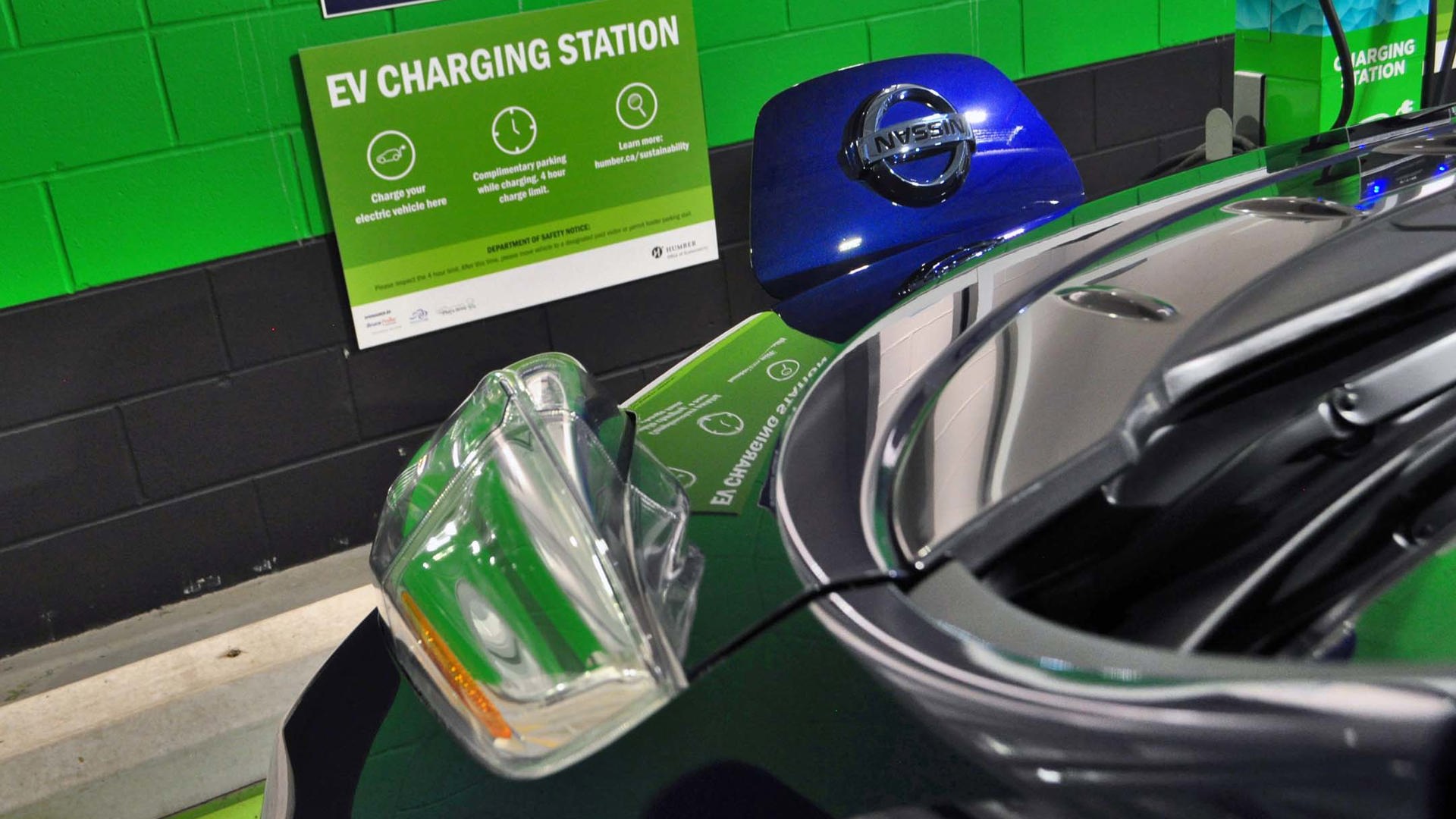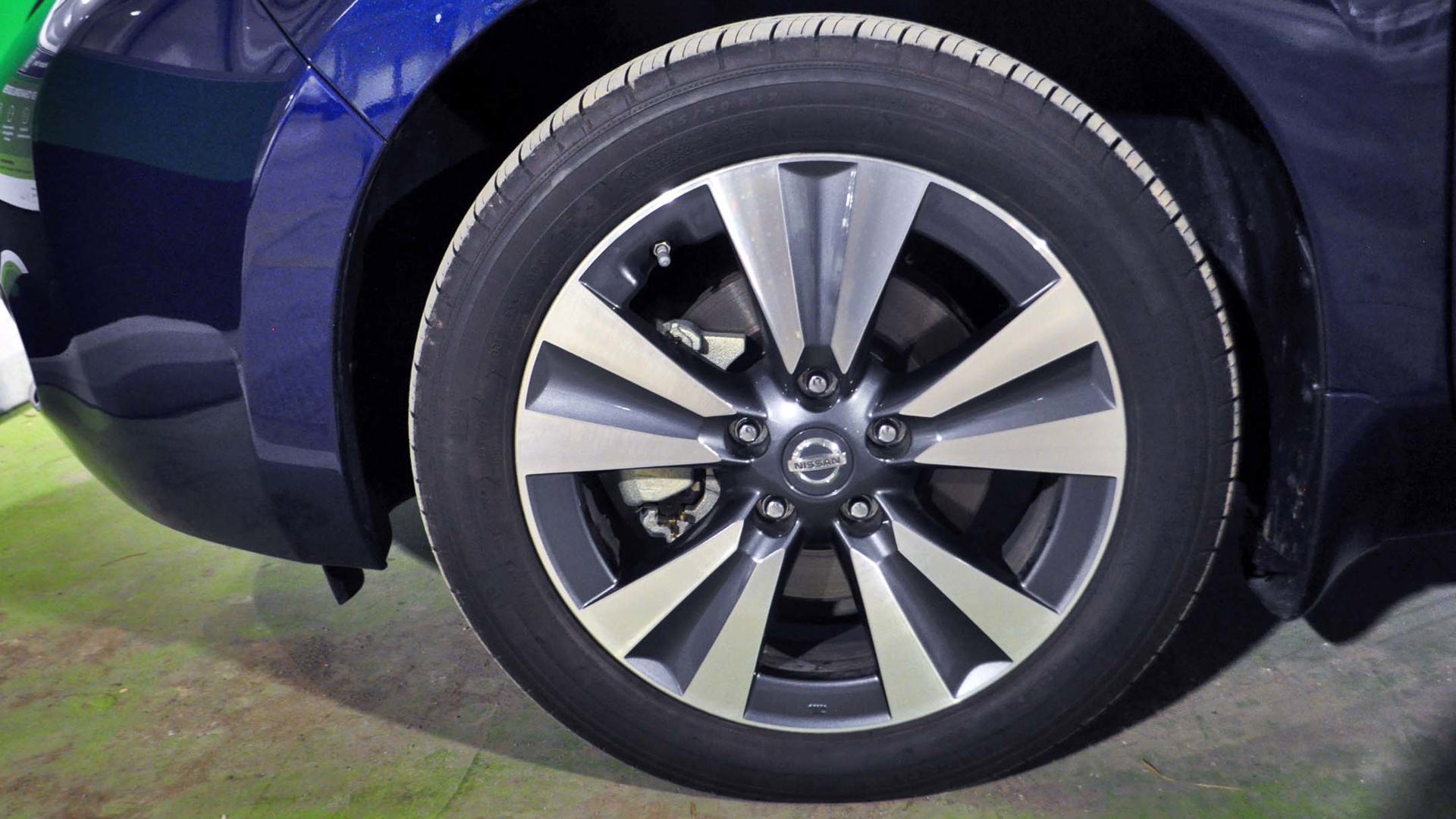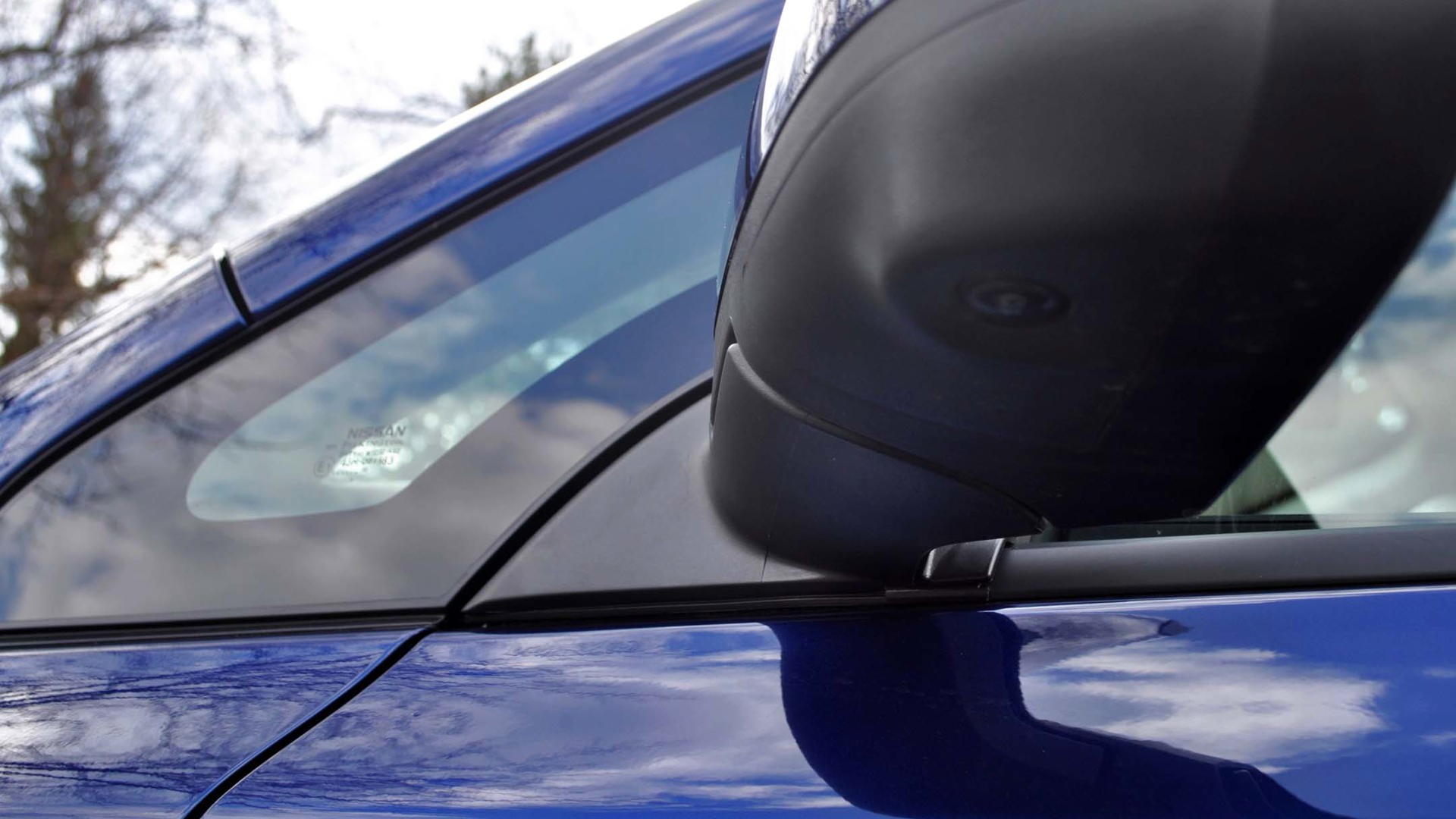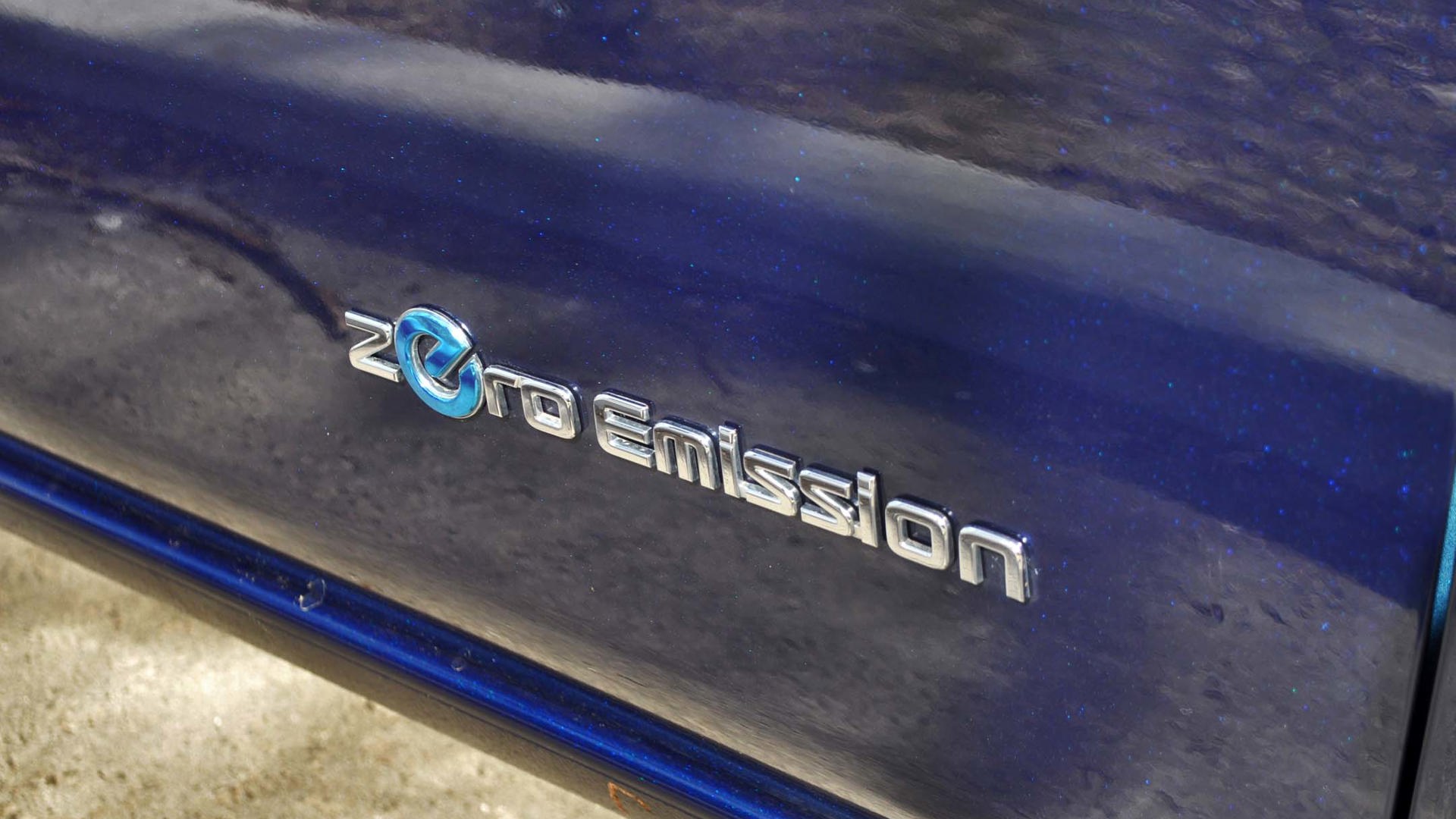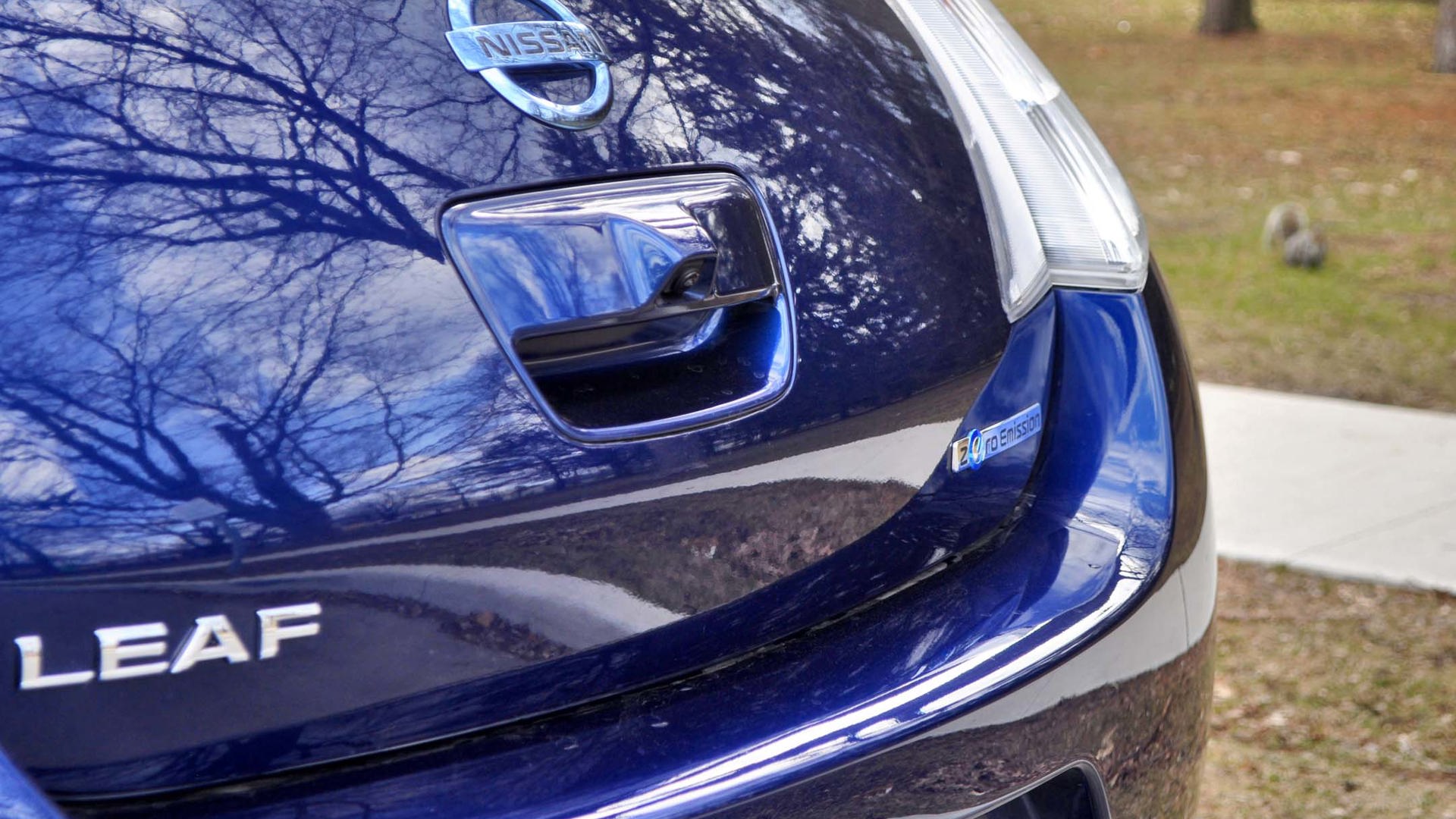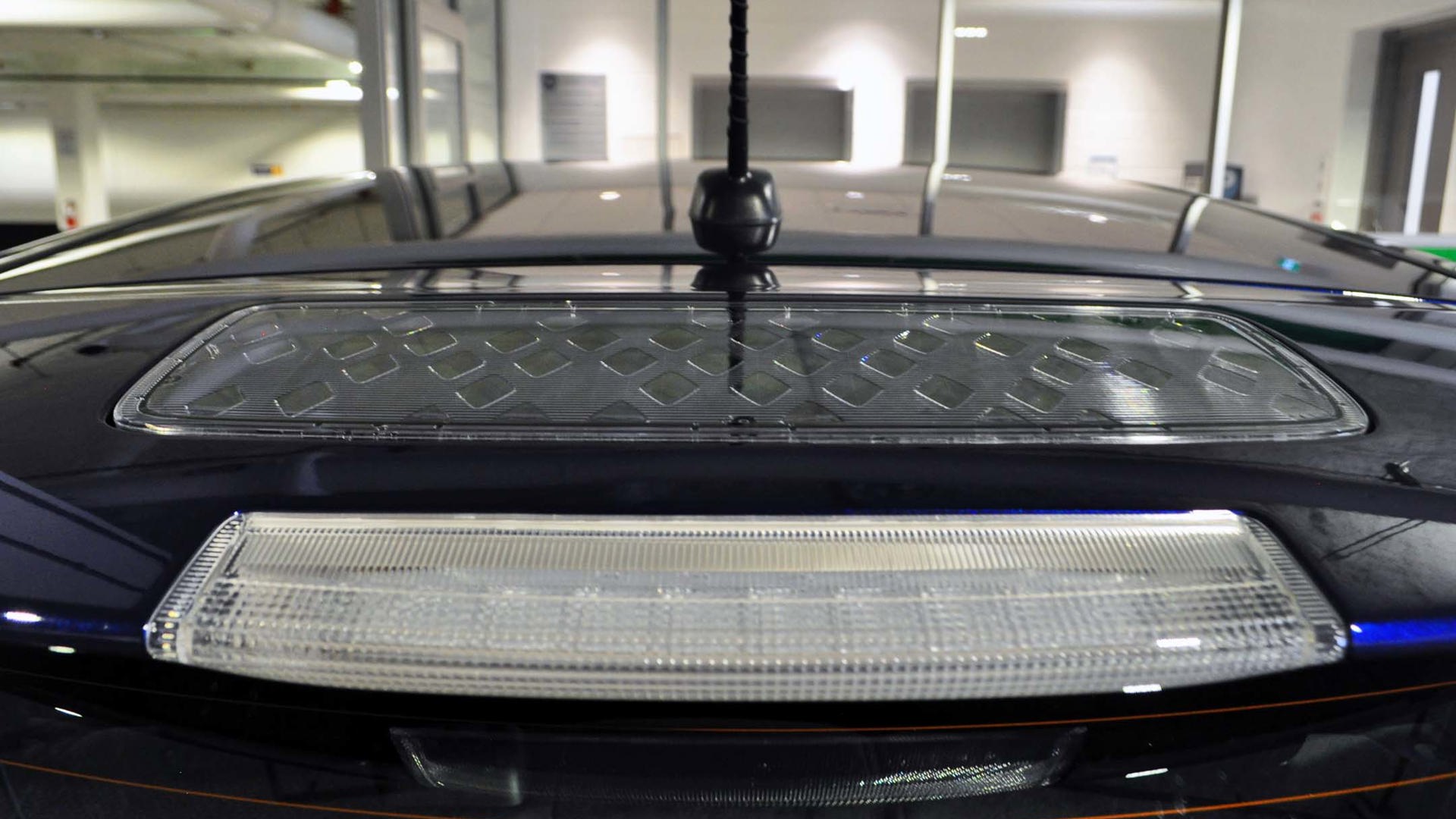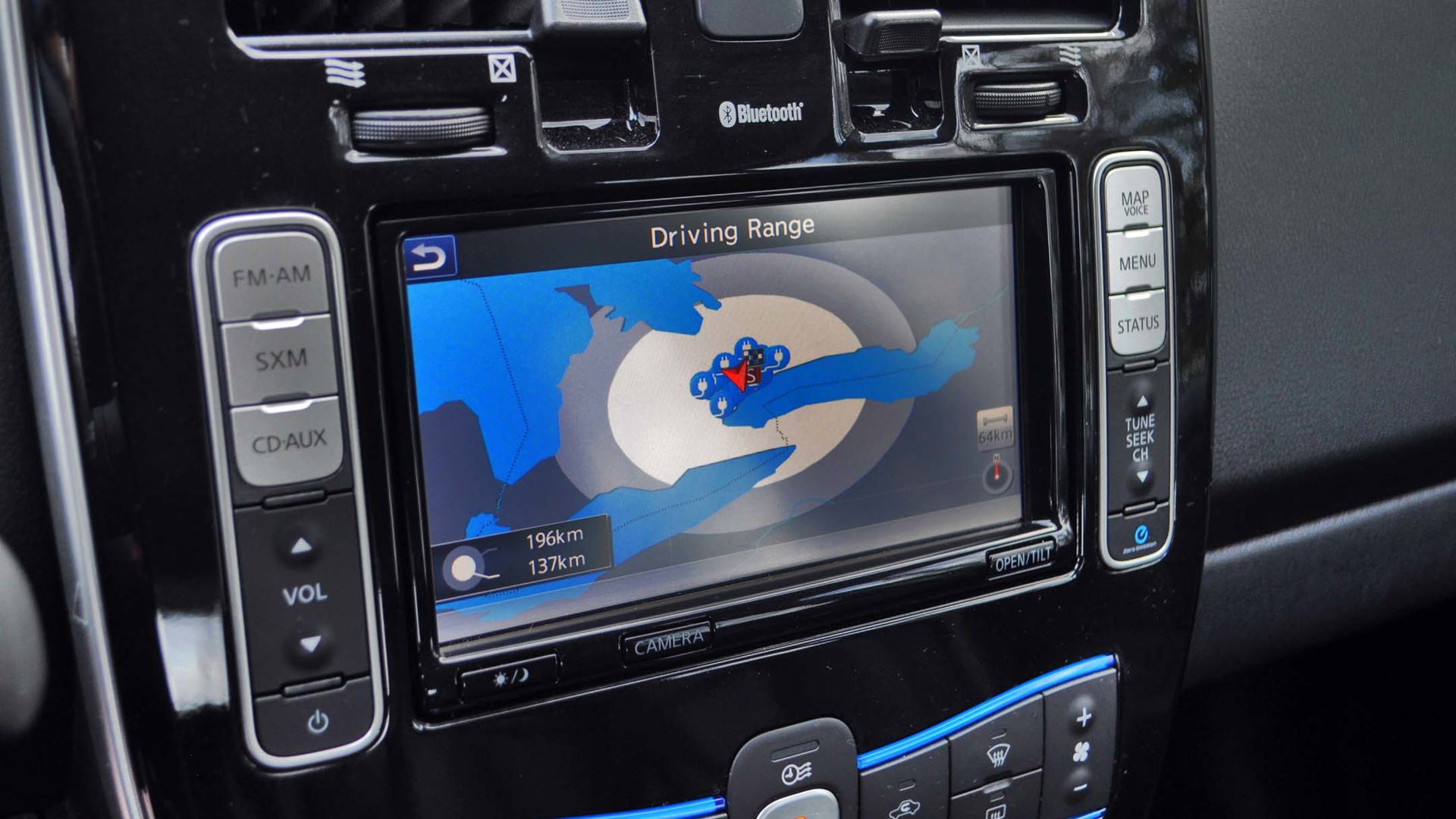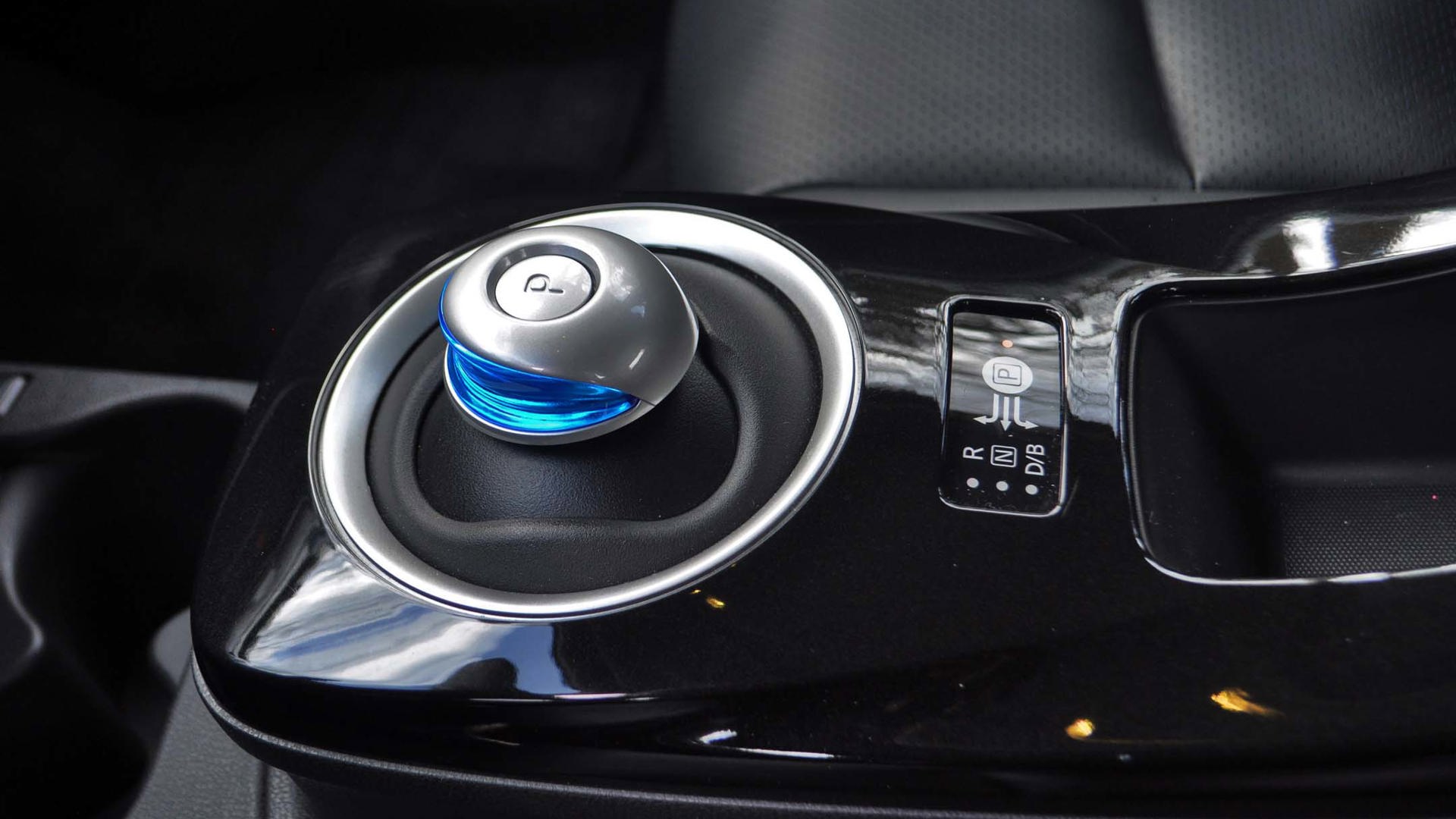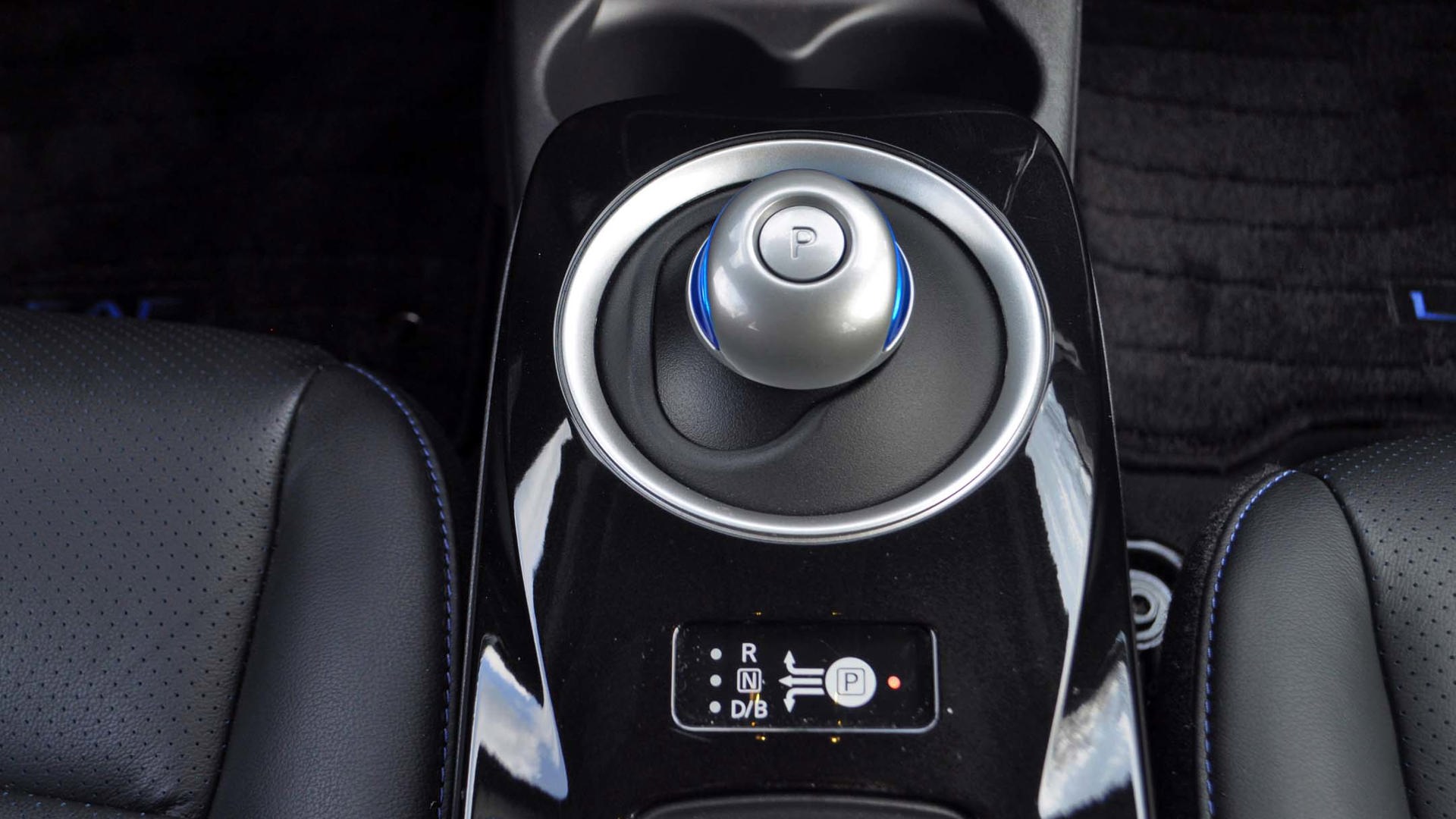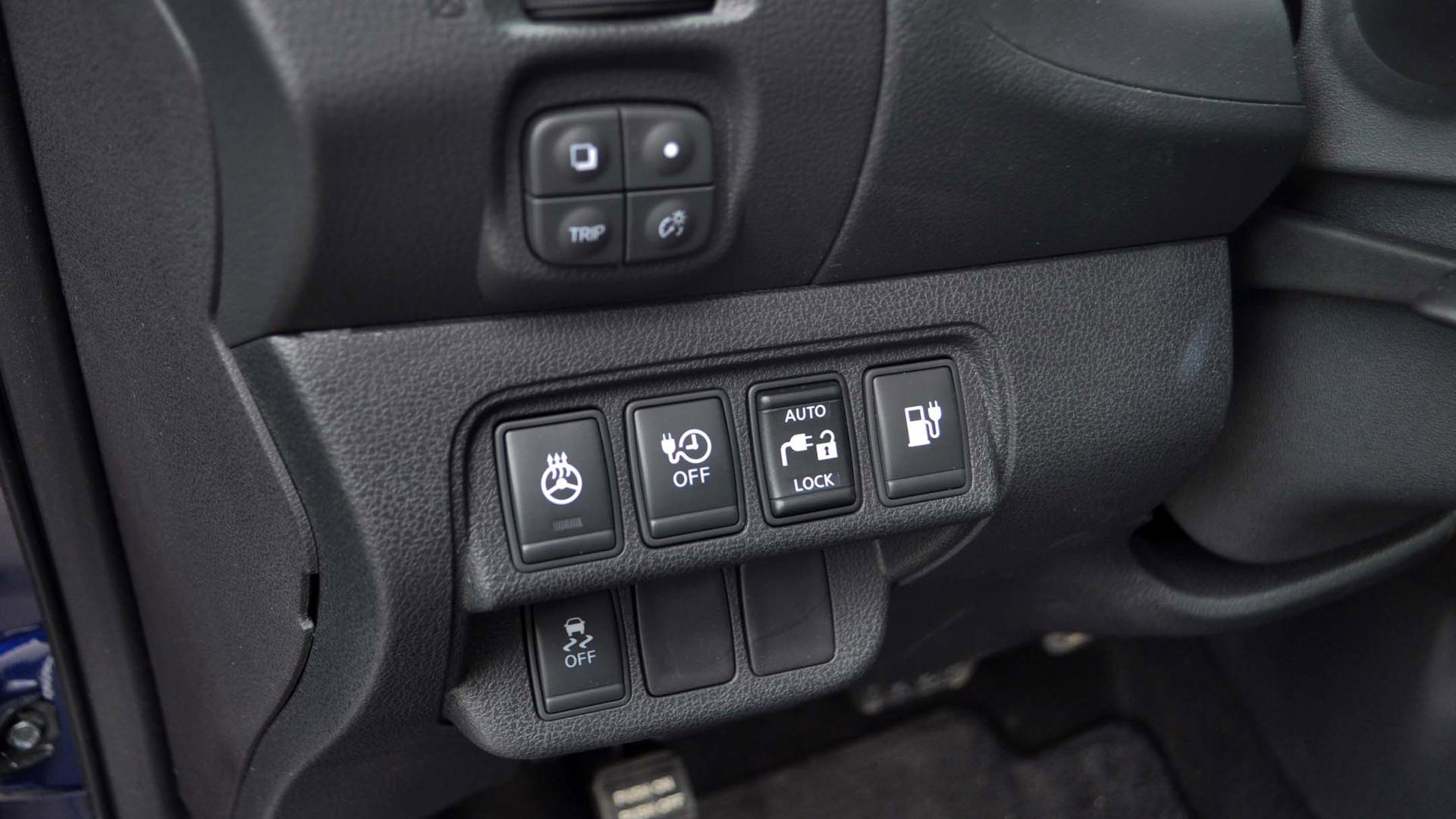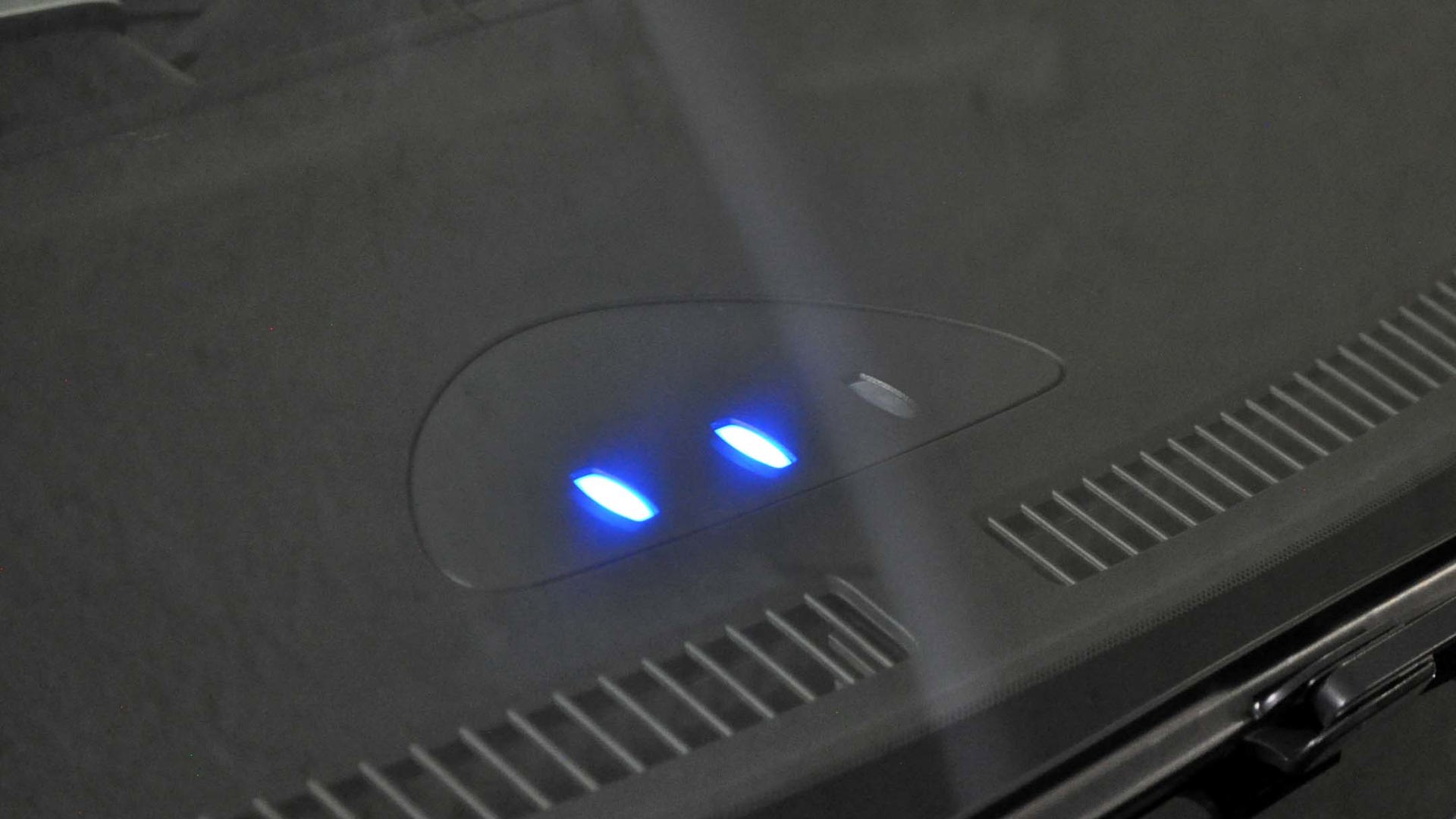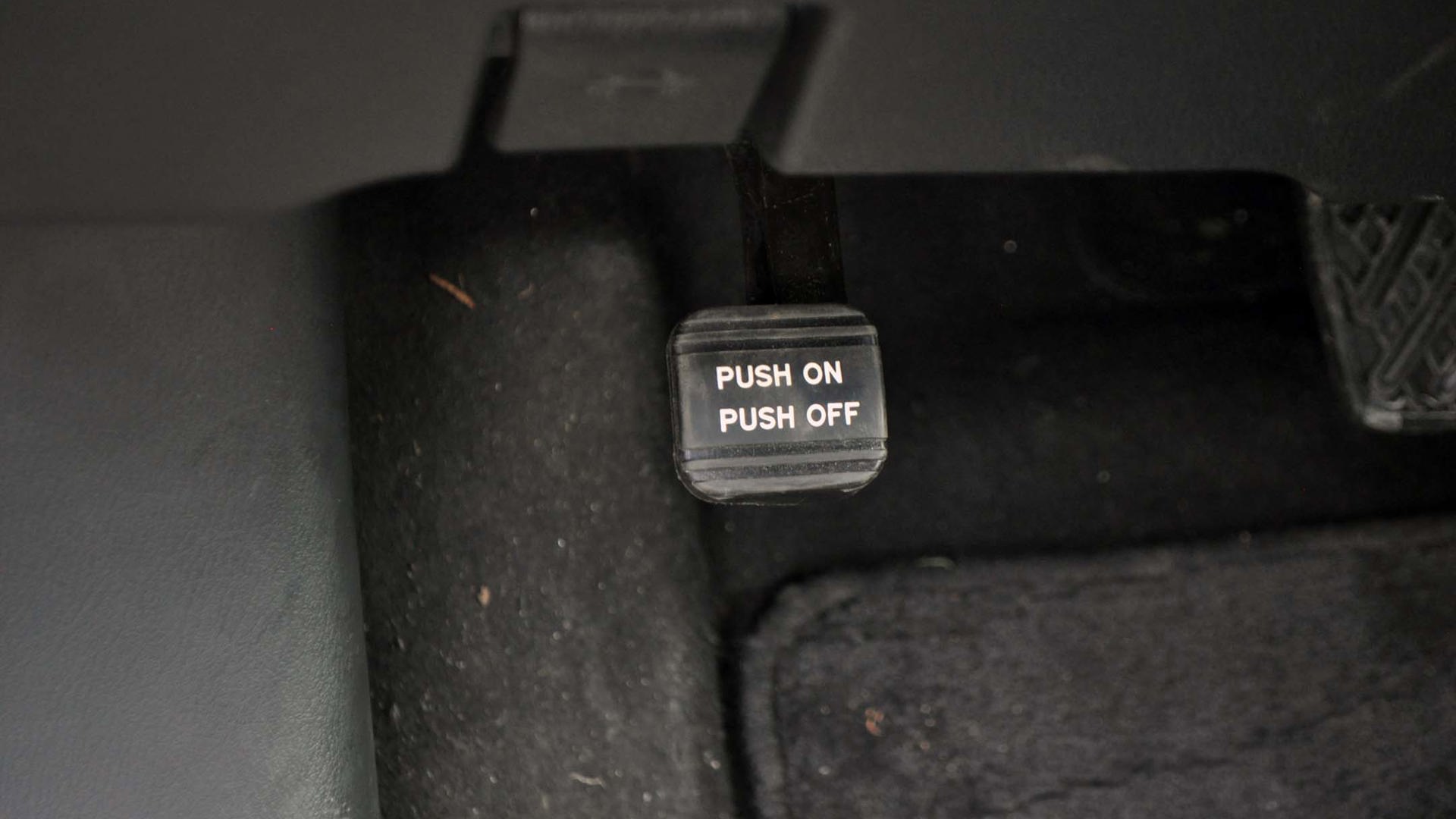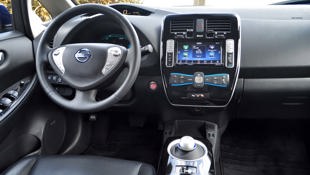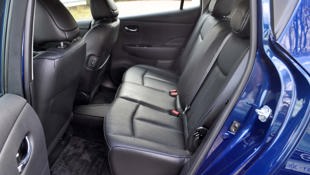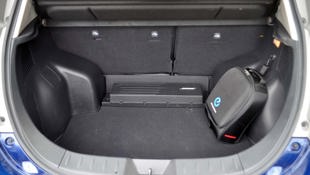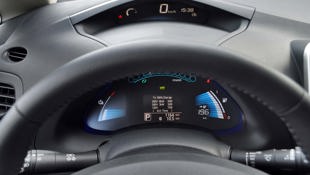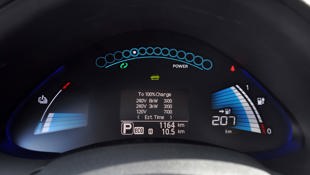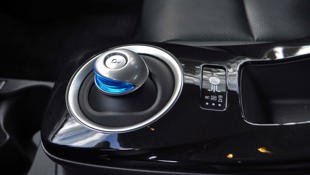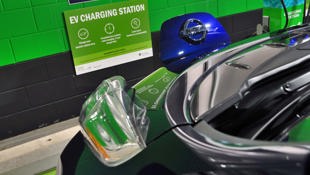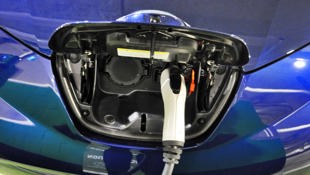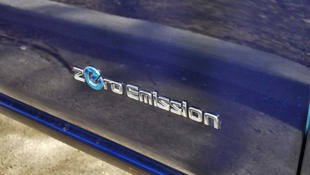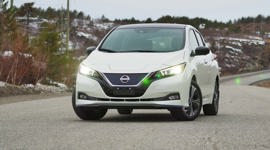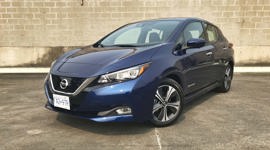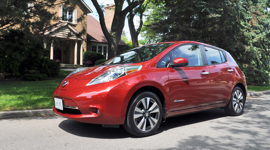 AutoTrader SCORE
AutoTrader SCORE
-
STYLING8/10
-
Safety8/10
-
PRACTICALITY7/10
-
USER-FRIENDLINESS8/10
-
FEATURES7/10
-
POWER6/10
-
COMFORT8/10
-
DRIVING FEEL7/10
-
FUEL ECONOMY9/10
-
VALUE6/10
Driving the 2017 Nissan Leaf recently was like an extended sad goodbye to a respected old teacher for what you know will be the last time. One whose health and best days are clearly behind it, but whose teachings you know left a legacy that’s worth recognizing.
This generation of Leaf will soon be a notable entry in automotive history.
Very similar to how we felt when we traded in our family’s 2012 Leaf just last year: bittersweet, but it was time to go.
Almost six years have passed since Nissan brought to Canada its all-electric Leaf: the first mainstream battery electric vehicle sold in the country. Unlike the Chevrolet Volt that was introduced right alongside it in an unusual futuristic electrified tag team, the Leaf hasn’t seen a full redesign in the seven years it’s been in the North American market. With an all-new 2018 Leaf waiting to be officially unveiled in September, this generation of Leaf will soon be a notable entry in automotive history.
And perhaps a somewhat outdated electric car, given the rapid advances in range and cost showing up in battery electric vehicle (BEV) rivals like the Chevrolet Bolt and the Tesla Model 3 – another likely historic BEV, roughly a year behind to market in Canada than in the US.
Though this Leaf is no longer at the cutting edge of EV technology, that it still holds up remarkably well against new-to-market entries like the 2017 Volkswagen e-Golf speaks to how ahead of its time it truly was at launch, and how Nissan has made largely invisible but notable upgrades that have helped it keep up.
Styling still looks geekishly modern, but range lags behind newer EVs
Even seven years on, styling has remained surprisingly modern, with few changes besides the larger 17-inch wheels on this top SL trim that came out a few years ago. So it has aged well – if you liked the unique, bug-eye style to begin with, which many admittedly didn’t.
Those hood-length headlights that rise from the hatchback’s fenders like alien goitres help scoop the wind up and over the hood quietly and efficiently, both of which are key when you’re running a 3,405 lb (1,544 kg) hatchback through the air at up to 145 km/h. Granted, most owners won’t be travelling anywhere near that top speed, not only because of its illegality on North American roads, but because of how quickly that would drain its 30 kWh lithium-ion battery of power.
Even the rear of the Leaf looks futuristic, with huge vertical taillights that run from bumper to roof. That’s the area where the Leaf has one of its signature styling features – a small solar panel over the rear hatch wing – which sadly only trickle charges the 12-volt battery, and not the big battery holding both grid and regenerated electricity to send to the front wheels.
That big battery is now up in size from the 24 kWh of the original Leaf, which provided a welcome boost in range from a rather meagre 117 km to a much healthier 172 km for 2017, according to Canadian government figures. Yes, that’s much less than the market-leading Chevrolet Bolt’s 383 km worth of range, and roughly 30 km of range less than the new Hyundai Ioniq BEV and similarly gas-free Volkswagen e-Golf.
Then again, the Leaf’s starting price of $33,998 is roughly $10K less than the smaller Chevrolet Bolt, and a couple grand less than the Ioniq or Golf BEVs, so the Leaf is starting to build itself a lower-cost niche. That may or may not change when the all-new 2018 Leaf is revealed, which is set to hit the market by the end of 2017, with expectations for at least the option of a 60 kWh battery, and the 350-plus kilometres of range that goes with it.
Quiet demeanour not matched by luxury suspension
When your drive wheels are propelled by spinning magnets electrically attracted to each other, as most modern electric cars are, you’ve saved your ears and the car’s drivetrain from thousands of tiny engine combustion explosions every minute. If you haven’t had the experience of trying a pure electric car, it’s worth seeking one out, as the silence of cars like the Leaf and the even more refined e-Golf are remarkable for the price.
Hitting the start button brings only a spacey starting noise, with complete drivetrain silence whether scooting around the city, cruising on the highway or 'idling' through a drive-through, unlike most hybrids or stop-start equipped cars. Only under hard acceleration can you hear a subdued Star Wars-esque high-pitched whoosh, while on the highway there's only subtle wind noise and tire patter.
Planting your foot brings a satisfying jump off the line, as the electric motor hits its max oomph pretty much right off the line, allowing the Leaf to feel responsive and alert in city traffic, helped along by its worthy 187 lb-ft of torque. However, there's only so much it can do with its meagre 107 hp, and once you've gathered up a full head of steam, the well of power runs dry pretty quick, as evidenced by its 0-100 km/h time in the 10 second range. That's sadly as slow as you can get for $43k, so unlike with Teslas, no one will buy a Leaf for its power.
But the Leaf's personality is more mini-luxury car than electric hot hatch. Not many sub-$50K cars are quieter than a Rolls-Royce, but this one is – as are most BEVs.
This top-trim Leaf SL's leather-lined interior was refined and mid-sized comfortable, with large seats and a tall roof that gives drivers and passengers plenty of leg and elbow room - the latter especially more generous than the much skinnier Bolt. Standard items like heated front and rear seats plus a heated steering wheel reinforce this feeling, though these leather seats could really use cooling elements, as the seats are not very well ventilated in general. But outside the colourfully blue shift controller that provides a futuristic touch to the interior, it's a starkly sombre overall ambiance, with little in the way of artistic flourishes that one would expect of a $40k+ car.
The Leaf’s quietly sophisticated driving personality doesn’t extend to its suspension tuning, unfortunately, which feels more compact-car bouncy than one may expect for an as tested price of $43,115 for our fully loaded SL tester. Plus the suspension is certainly set for soft when it comes to handling, with noticeable body lean dissuading any rapid relapses from one’s regularly scheduled hypermiling.
That as-tested price doesn’t include any provincial EV incentives, which currently range from $5,000 in BC to $8,000 in la belle province to a whopping rebate of $12,389 in Ontario (which is what the Ontario max $14,000 works out to after factoring in the sales tax, according to Nissan’s helpful consumer website). It’s great for those in the three most-populous provinces, but for buyers outside those areas, just finding a Nissan dealership that sells the Leaf may be a challenge.
Infrastructure improving constantly in rebate provinces, but others lag
One of the most disappointing aspects of Leaf ownership in Canada compared to in the US is how much less in DC quick-charging infrastructure Nissan Canada has committed to installing. South of the border, Nissan made a much larger investment to this end, including installing much pricier Level 3 CHAdeMO chargers at dealerships across the country, and also partnering with BMW and various charging network operators to quickly expand fast-charging highway corridors, designed to reduce or ideally eliminate range anxiety – the bane of every BEV owners’ existence.
To be fair, Nissan has announced some such DC quick-charger funding in association with Quebec’s Electric Circuit public charging stations. And like all dealerships that carry EV models, Nissan has obligated dealers to install multiple Level 2 (240 volts) charging stations, which is the kind of charger Nissan recommends for owners to install in or near their garages at home.
These types of chargers take approximately six hours to fully charge a Leaf from near-empty, but are lifesavers on those busy weekend days when you’re shuttling kids or yourself from one end of the city to the other, or beyond; especially in the wintertime, when cold temperatures as well as extra battery-sourced heat generation means the Leaf’s range can drop from its official 172 km down to roughly half that.
Long distances (100 km or more) were originally problematic for the Leaf, but are becoming less so in the three rebate provinces, as all three governments have invested significant funds into adding public chargers. There are still some “dead zones”, which may necessitate some longer stops at an L2, or if you’re really unlucky with the charger overlords, plugging into a regular 110-volt outlet – which takes roughly 26 hours to fully recharge a depleted battery.
So those longer trips as well as bitter winter days are where those public DC quick chargers can become godsends, providing that little bit of confidence that you can stop somewhere and power up, and not be stranded on the side of a cold road.
Value better now than at launch, and perhaps soon even better
The launch of the Nissan Leaf in 2011 offered an emissions-free but somewhat daunting technological window into one vision of the automotive future. While the Volt offered a gasoline “safety blanket” to allow it to travel long distances without concern, the Leaf required an adventurer’s spirit, and a commitment to live with the limitations of a new $45,000 car that couldn’t do the two-hour highway drive that most used $4,500 ones can.
Both the battery technology and the infrastructure have advanced significantly in the past six years, while prices for battery packs have come down substantially. The future looks much clearer now, the increasing electrification rate of all vehicles now a question of when, not if.
Its teachings will last, and with quite a few technologically advanced descendants, thanks to the sometimes hard lessons taught by this pioneering vehicle.
| Engine Displacement | 80 kW electric motor |
|---|---|
| Engine Cylinders | N/A |
| Peak Horsepower | 107 |
| Peak Torque | 187 |
| Fuel Economy | Range: 172 km, 2.1 Le/100 km |
| Cargo Space | 668 L |
| Model Tested | Nissan Leaf SL |
| Base Price | $40,548 |
| A/C Tax | $100 |
| Destination Fee | $1,990 |
| Price as Tested | $43,115 |
|
Optional Equipment
$300 – Deep Blue Pearl paint; $151 Zero Emissions graphics
|
|
